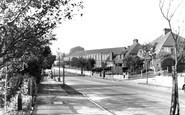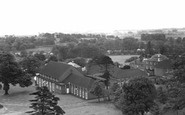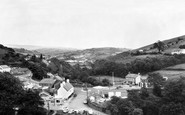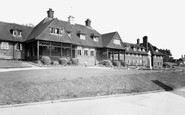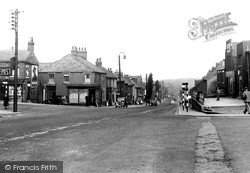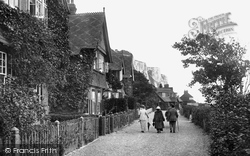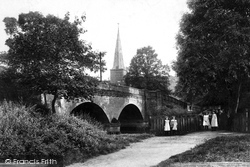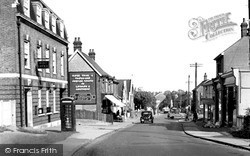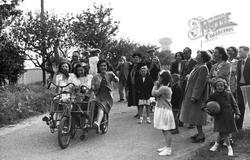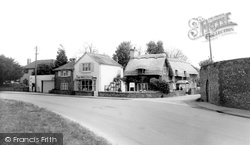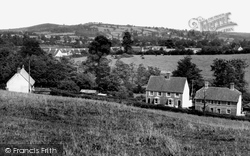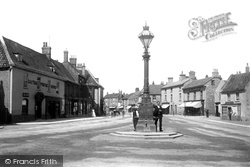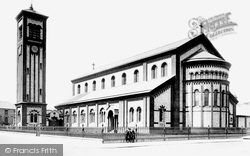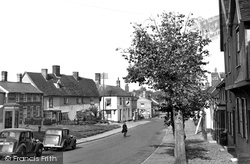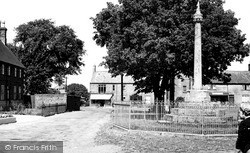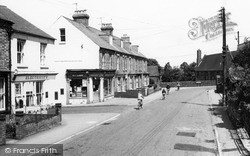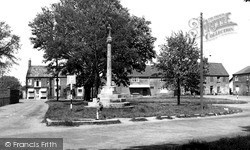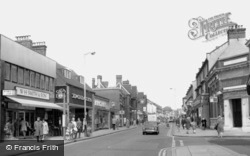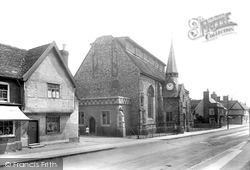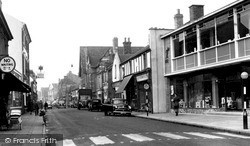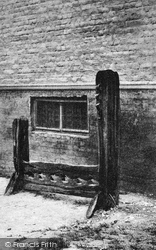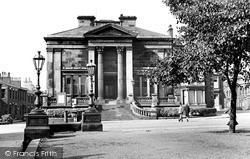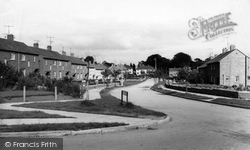Places
Sorry, no places were found that related to your search.
Photos
Sorry, no photos were found that related to your search.
Maps
Sorry, no maps were found that related to your search.
Books
Sorry, no books were found that related to your search.
Memories
655 memories found. Showing results 121 to 130.
I Was Schooled Here From 1961 Until 1968
I was a boarder at the convent. I started in the Autumn term before my 5th birthday and remember being put to bed in a large dormitory on the top floor, full of other children with a cubicle for a nun to sleep ...Read more
A memory of Bridport by
Red Lion Primary School In 1949
My name is Alan Naber and in 1949 I was five years old and started my school life at Red Lion Road school. This is an account of how I saw life at that time with a few additions from other students I am still in touch ...Read more
A memory of Tolworth by
Growing Up In Selsdon
I was 9 when we returned from Australia in the summer of 1967, we lived at 37 Farley Road after three different houses in Littleheath Road all belonging to friends of my parents, who conveniently were away on holiday by consecutive ...Read more
A memory of Selsdon by
Whitstone School 1970's
I attended Whitstone during the changeover from Secondary Modern to Comprehensive. It was quite a shock to me. I'd always been to small, private schools, & it seemed huge. I was also amazed & shocked by the bad ...Read more
A memory of Shepton Mallet by
Old Family
My Grandfather was Frank Swabey, who lived at POND FARM SOUTHWATER . He ran his COAL business and Cattle/Live stock haulage company from there. It is now A housing estate with no sign of any of the old businesses. My Sister and I had ...Read more
A memory of Southwater by
Geoff Clarke 1962 1970 Troy
Getting in to Swanwick Hall Grammar School from Kilburn Junior School was an incredible surprise for me but I did OK all thanks to the amazing teachers there at the time and it set the scene for the rest of my life. It got me ...Read more
A memory of Swanwick by
Train Breakdown
Hi everyone, I wonder how many of you can remember the coal train, with all its trucks full of coal, breaking down on the Gilfach line behind Isfryn prefabs; it was there all night and plenty of people had full coal sheds by ...Read more
A memory of Blackmill by
Here 1947 1950
When I first came here the NHS hadn't begun, I think my mum was asked to pay 7/6d per week! Visiting was 2hrs on the 1st Sunday of the month only. Just as well really because my parents had to travel from 3 miles south of Dorking. I laid ...Read more
A memory of Alton by
Ponty Park
I have fond memories of Dante Fair where I used to meet my old mates and the gorgeous Christine Harris. Every time I listen to 'The Carnival is over' reminds me of her. The 60's in the Park we would swim through a break in the wood ...Read more
A memory of Pontypridd by
Old Barn, Warkworth
I am trying to find if someone has an old school photo circa 1917/8/20. My mum was born at the Old Barn just along the lane, off Warkworth Ave. She was always camera shy so all I have as a memory is chance sneak photos taken on ...Read more
A memory of Warkworth by
Captions
405 captions found. Showing results 289 to 312.
The village flourmill was powered by two overshot waterwheels. The mill is pictured when it was still in working order.
The main A177 road south from Shincliffe leads to Coxhoe; it may follow the course of an old Roman road.
This is the landscape northwards from the limekilns and quarries north of Wych to the Main Street at Bothenhampton (left to right).
The windows of the grand red brick and tiled houses are wide open, which suggests that a welcome cool breeze is coming in off the sea. The chalk cliffs are part of the White Cliffs of Dover.
Looking south across the River Wey, with a group of children posing for the photographer in front of the wooden Boarden Bridge, the centuries-old crossing point.
The sign in the foreground points to the Army's Central Ammunitions Depot in Bramley Road, which eventually shut in the 1970s.
The Post Office building is solidly built of brick.
For many working people, life after the war was grey and utilitarian. Holiday camps like Caister's offered inexpensive breaks for the whole family, with everything included in the cost.
An isolated village of flint and brick cottages, to the west of Chichester. In the village are Adsdean, a gabled Tudor style house of around 1850, and the church of St Mary, built in 1859.
We are looking north- eastwards from one of the public footpaths across Tarks Hill over Mill Lane and Brister End (centre) to the twin peaks of Honeycombe Wood (top left) and Lillington Hill
The Old House (left) dates from 1678, and it is a prominently sited example of English domestic architecture at its very best.
On the left is a fine Victorian shop- front imposed on a plain brick house. The town is renowned for its public school, Gresham's, founded in 1555 by John Gresham, Lord Mayor of London.
Romanesque Italy arrived in Susans Road, Eastbourne, with this remarkable church in yellow and red brick and terracotta funded by a great-niece of the Duke of Wellington, Lady Victoria Wellesley, and
On the right are Rayner's, an electrical shop, and Thomas the ironmonger. To the right, the long building is the former 15th-century Guildhall.
The Buttercross is to be found in the centre of the village market place. The railings have gone, as have the brick wall and the trees behind it.
Church Street and the roads off to the left are part of a grid of Victorian brick, terraced, straight streets.
The roughly rectangular Market Place (or village green) with its medieval cross is surrounded by attractive houses with shops on the east side.
This new viaduct across the Tamar has just been opened, linking Plymouth to the district around Gunnislake and Callington.
High Street North is a relatively undistinguished and typical London suburban shopping street: the exuberance of the Town Hall complex is forgotten.
Needham, on the main road, was in ancient times a hamlet of Barking, but only became a parish in 1901.
At the Stamford Road end of the street, the newly-built showroom of Tutty's sold kitchen units and appliances. Newman's next door was an old-fashioned ironmongers, which has resisted change.
A four-hour period in the stocks was the usual reward for misdemeanours such as blasphemy, drunkenness, vagrancy or breaking the Sabbath.
The Institute for the Diffusion of Useful Knowledge has stood up well to the passing of time.
Looking down New Street to the Moot Hall, we can see on the right a brick Georgian house where many BBC trainees lodged in the 1960s.
Places (0)
Photos (0)
Memories (655)
Books (0)
Maps (0)



